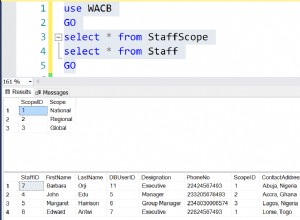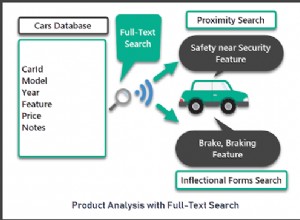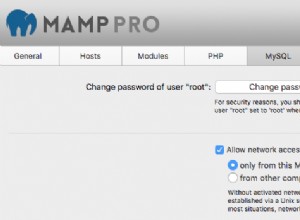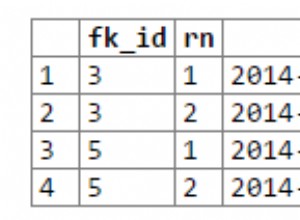In realtà non stai utilizzando caratteri al di fuori della pagina e del set di caratteri del database.
Poiché la pagina è codificata Windows-1252, se inserisci Alt+251 in un campo modulo e quindi pubblichi i dati, il browser dice:
"Hey this char is not apart of windows-1252 and I need to only send back data
which is in windows-1252, so I will do the best I can and send back the
html character code of char √ -- oh well, I wish I could send back
1 character, since I cannot I will send back 7."
E se noti, si tratta di 7 caratteri diversi che si trovano nel set di caratteri di Windows-1252.
Se la pagina fosse stata codificata con un set di caratteri multibyte, il browser invierebbe qualcosa che è considerato 1 carattere.
Allora come puoi interrogarlo?
select * from tab where field like '%√%'
Quello che hai è il carattere html del simbolo della radice quadrata:https://www. .google.com/#q=html+codici+carattere
Aggiornamento:
Ecco un ottimo articolo che spiega cosa sta succedendo:http://htmlpurifier.org/docs/ enduser-utf8.html
"...once you start adding characters outside of your encoding...
[the browser might] replace the character with a character entity reference...."
Inoltre quando inserisci Alt+251 su un computer Windows, inserisce il simbolo della radice quadrata che in Unicode è U-221A.
Premendo Alt+251 è proprio come una macro da tastiera per inserire Unicode è U-221A.




